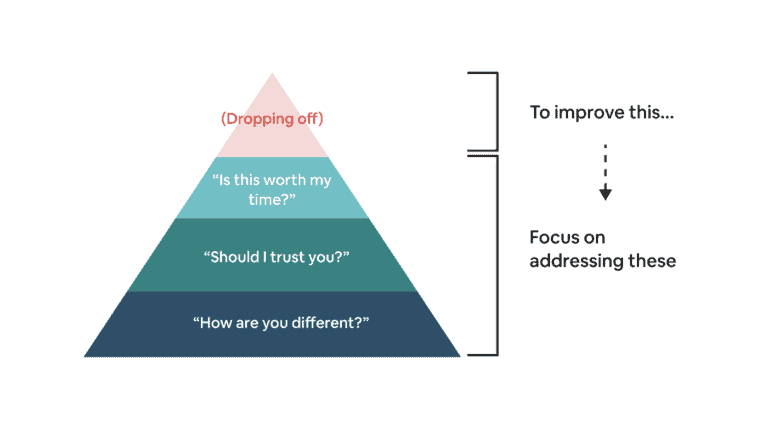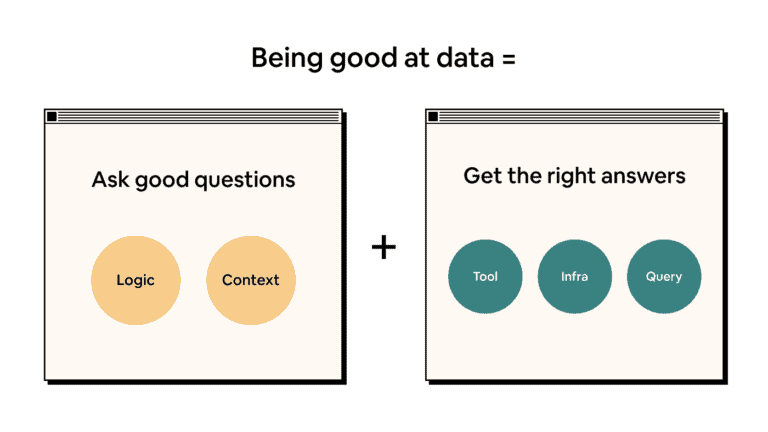Here is a common mistake SaaS teams make when working on activation:
You notice users dropping off before completing a basic setup task (that’s not even that unique to your product). You thought, “Probably too much friction.” -> So you remove some steps, make UI simpler, and shorten copy to reduce cognitive load.
But the metric doesn’t go up. You thought, “Users must not understand how to do it.” -> So you add tooltips, tutorials, a checklist, and links to external articles to teach users.
Things still don’t improve. You thought, “They might be putting it off.” -> So you create an email campaign reminding them to “do X.”
Sure, all of these actions will help, but unless you designed the initial flow blindfolded, they likely won’t truly move the needle.
But why?
You see, not performing a simple action is only the symptom. The real cause usually lies much deeper, and it often takes root way before users sign up.
The promise your product shows so far — landing page, ads, how others talk about you on Twitter, reviews on G2, etc. — might not give users enough motivation to continue:
- What is the problem you’re really solving?
- Do users agree they should solve it?
- How are you going to solve it better?
- Does the entire experience match the stated promise?
Example:
Your product is an AI-powered video editing tool. To begin the onboarding, you ask users to upload a video with a standard file picker, but 80% of the users don’t do it.
Do you really think users don’t understand the ask, or don’t know how to do it…?
The truth is that they probably don’t do it because:
- They’re not sure how you’re different from existing tools.
- They don’t know how your “AI” will use the video uploaded.
- The results showcased on the landing page just aren’t good enough.
- Or perhaps they stumbled onto your website while searching for a “photo editing tool.” In other words, they were never your target audience in the first place.
This is not to say you shouldn’t work on the user experience surrounding that step. The point is that you should be careful where to concentrate your effort. Remember, activation starts way before users hit the sign-up button. Don’t over-invest in local optimizations and ignore the underlying cause to leads to the drop-off.
A good way to identify areas of improvement in your current journey is by applying the Psych’d framework, starting right at the top of your acquisition funnel. And if you’re not sure how people typically find and sign up for your product, now’s the perfect time to figure it out.
P.S. The same principle also applies to trial conversion, expansion, retention, and so on.




